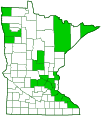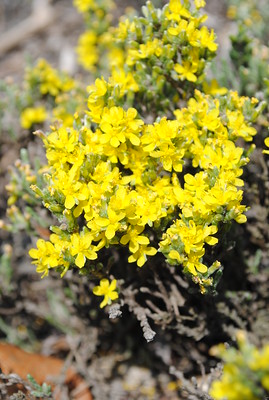woolly beachheather
(Hudsonia tomentosa)
Conservation • Description • Habitat • Ecology • Use • Distribution • Taxonomy
Conservation Status |
|
|||||||
| IUCN Red List | not listed |
|||||||
| NatureServe | N5 - Secure S2 - Imperiled |
|||||||
| Minnesota | Threatened |
|||||||
Description |
||
Woolly beachheather is a long-lived, low-growing, clone-forming shrub. It occurs in North America from Quebec to North Carolina west to Alberta and Minnesota. In the United States it is mostly restricted to the East Coast and the shores of the Great Lakes, but also occurs inland in Wisconsin and Minnesota. It is found on beaches and sand dunes, and in open, sandy, disturbed sites. It grows in the bowl-shaped depressions (blowouts) between the crests of the dunes, areas often devoid of other vegetation. Woolly beachheather is rare and widely scattered in Minnesota, but it is locally abundant in areas where dunes are protected by management policies. It is very sensitive to trampling when growing on open sand. It is listed as a threatened species in Minnesota. Woolly beachheather is a 1½″ to 8″ (4 to 20 cm) tall, mat-forming, evergreen, perennial shrub or subshrub. It sometimes forms clumps that are wider than high, up to 80″ (2 dm) wide or wider. The stems may lay flat on the ground (prostrate) or rest on the ground with just their tips ascending (decumbent). They are slender, densely branched, up to 12″ (30 cm) long, and ⅛″ (3 mm) in diameter. They root where the nodes touch the ground, creating clone plants when separated from the parent. Branches are ascending and up to ⅝″ (1.5 cm) high. The ultimate divisions (branchlets) are greenish and densely hairy at first, becoming reddish-brown and hairless or almost hairless at maturity. The leaves are alternate, evergreen, stalkless, closely appressed to the stem, and overlapping. The leaf blades are scale-like, mostly lance egg-shaped, pointed at the tip, 1⁄32″ to ⅛″ (1 to 3 mm) long, and 1⁄32″ to 1⁄32″ (0.3 to 0.6 mm) wide. The upper and lower surfaces are densely covered with gray woolly hairs. This is the feature that gives the species one part of its common name. The margins are untoothed. The inflorescence is many small but showy yellow flowers, each rising singly on a very short stalk in an upper leaf axil. Each flower is ¼″ to ⅜″ (6 to 10 mm) in diameter. There are 5 outer floral leaves (sepals), 5 petals, 8 to 20 stamens, and 1 style. The sepals (taken together, the calyx) are in two series. The two outer sepals are fused for half their length to an inner sepal. The calyx is ⅛″ to 3 ⁄16″ (3 to 5 mm) long and is densely covered with appressed hairs. The petals are yellow, oblong or narrowly egg-shaped, and ⅛″ to 3 ⁄16″ (3 to 5 mm) long. They fall off early, before the fruit is formed. The stamens are shorter than the style but are conspicuous above the petals. The style has a minute stigma at the tip. The fruit is a smooth, brown, cylinder-shaped, ⅛″ (2.5 to 3.0 mm) long seed capsule with a single chamber. It remains enclosed by the persistent, erect, twisted, densely hairy sepals. It matures in July to early August. |
||
Height |
||
1½″ to 8″ (4 to 20 cm) |
||
Flower Color |
||
Yellow |
||
Similar Species |
||
Habitat |
||
Dry. Beaches, sand dunes, and other open sandy sites. Full sun. Sand. |
||
Ecology |
||
Flowering |
||
May to July |
||
Pests and Diseases |
||
|
||
Use |
||
|
||
Distribution |
||||
|
Sources |
|||
| 11/11/2023 | ||||
Nativity |
||||
Native |
||||
Occurrence |
||||
Rare and widely scattered but locally abundant. |
||||
Taxonomy |
|||
| Kingdom | Plantae (Plants) | ||
| Division | Tracheophyta (Vascular Plants) | ||
| Subdivision | Spermatophytina (Seed Plants) | ||
| Class | Magnoliopsida (Dicots) | ||
Order |
Malvales (mallows, rock-roses, and allies) | ||
Family |
Cistaceae (rock rose) | ||
Genus |
Hudsonia (goldenheather) | ||
Subordinate Taxa |
|||
A few authors recognize the variety sand golden-heather (Hudsonia tomentosa var. intermedia), but this name is misapplied to the hybrid with Hudsonia ericoides, and should be referred to as Hudsonia × spectabilis. |
|||
Synonyms |
|||
Hudsonia ericoides ssp. tomentosa Hudsonia tomentosa var. tomentosa |
|||
Common Names |
|||
beach-heath sand golden-heather sand-heather woolly beachheather |
|||
Glossary
Axil
The upper angle where a branch, stem, leaf stalk, or vein diverges.
Calyx
The group of outer floral leaves (sepals) below the petals, occasionally forming a tube. Plural: calyces.
Decumbent
Reclining on the ground but with the tip ascending.
Node
The small swelling of the stem from which one or more leaves, branches, or buds originate.
Prostrate
Laying flat on the ground.
Sepal
An outer floral leaf, usually green but sometimes colored, at the base of a flower.
Visitor Photos |
|||||
Share your photo of this plant. |
|||||
| This button not working for you? Simply email us at info@MinnesotaSeasons.com. Attach one or more photos and, if you like, a caption. |
|||||
Jordan Wilson |
|||||
Hudsonia tomentosa |
|||||
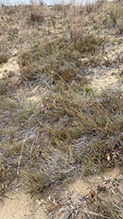 |
|||||
Nancy Falkum |
|||||
Landscape of the dunes and Hudsonia Tomentosa |
|||||
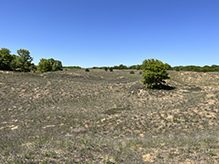 |
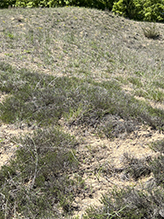 |
||||
Beach Heather flowers |
|||||
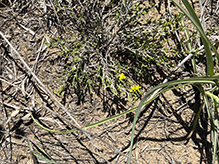 |
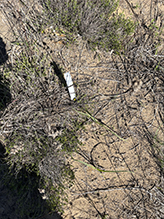 |
||||
 |
|||||
MinnesotaSeasons.com Photos |
|||||
|
|||||

Visitor Videos |
|||
Share your video of this plant. |
|||
| This button not working for you? Simply email us at info@MinnesotaSeasons.com. Attach a video, a YouTube link, or a cloud storage link. |
|||
Other Videos |
|||


Created: 6/10/2022
Last Updated:
